Disaster Blaster is a roguelike game with some interesting mechanics:
- Core gameplay: It’s an auto-runner where your character automatically moves and shoots. You don’t directly control movement but instead focus on upgrading your weapon.
- Upgrade system: The main strategic element involves choosing upgrade cards for your blaster. These cards affect damage, fire rate and add special effects.
- Mathematical synergy: The game emphasizes combining cards to create powerful mathematical synergies – stacking damage multipliers, recursive effects, and base damage increases to create exponential growth in destructive power.
- Progression system: You earn currency through runs that lets you unlock new planets, characters, and skill cards for future playthroughs.
- Challenge elements: When hit, instead of losing health, one of your cards might be shattered – potentially breaking crucial synergies. Different enemy types also require adapting your weapon configuration.
The reviewer points out some downsides:
- Random unlocks with little preview information
- Basic graphics reminiscent of the Commodore 64 era without much charm
- Annoying music that the reviewer quickly muted
Overall, the review suggests it’s a satisfying experience if you enjoy mathematical optimization and building synergistic systems. The payoff is increasingly spectacular destruction as your weapon becomes more powerful.
The game is available on Steam with a free demo for those interested in trying it.
Disaster Blaster: A Roguelike Driven by Mathematical Destruction
Overview
Disaster Blaster is a deceptively simple roguelike that transforms into a deeply engaging experience built around mathematical synergies and satisfying destruction. Despite its retro graphics and auto-runner format, the game offers surprising strategic depth through its card-based weapon upgrade system.
Gameplay Mechanics
At its core, Disaster Blaster strips away direct character control—your protagonist, described as a “twitchy little shock-haired weirdo,” automatically sprints and jumps rightward while shooting at everything in their path. This design shifts all player agency to the strategic selection of upgrade cards that modify your blaster’s capabilities.
The true innovation comes from how these cards interact. Rather than just incremental improvements, cards can be combined to create powerful mathematical relationships. By strategically placing damage increases, multipliers, and recursive cards that repeat previous effects, players can transform their starting “underpowered pea-shooter” into a “world-destroying weapon of mass destruction.” The game enhances this satisfaction by providing damage previews that eventually exceed the numerical display, simply showing “REALLY??” for particularly devastating combinations.
Progression and Challenge
The game maintains challenge through several clever systems:
- Card destruction: Getting hit sometimes shatters a crucial card rather than reducing health, potentially decimating your damage output
- Enemy variety: Different enemies require adapting your weapon configuration—rapid-fire setups excel against swarms but struggle against larger foes
- Currency system: Points accumulated during runs convert to currency for unlocking new planets, characters, and skill cards
Visual and Audio Presentation
The visual aesthetic embraces a Commodore 64-inspired look with “candy-colored, retro graphics” that the reviewer suggests lacks charm despite its nostalgic inspirations. The soundtrack fares worse in the review, described as “completely unbearable” with “carnival-style thumping and wheezing” that drove the reviewer to quickly find the mute option.
Drawbacks
The game’s progression system suffers from excessive randomness. New characters are unlocked without previews, and skill cards are obtained “blind box style,” with players only seeing suggestive icons until the skills appear during actual gameplay. This approach limits strategic planning between runs.
The Appeal
Disaster Blaster succeeds by delivering a “satisfying roguelite loop designed to feed your brain a steady drip of delicious chemicals.” Its core appeal lies in watching your character’s transformation from struggling against minor enemies to unleashing “incinerating bolts that engulf entire city blocks in nuclear fire.” For players who enjoy optimization puzzles and exponential power growth, the game offers a unique and rewarding experience.
The game is currently available on Steam with a free demo for curious players who want to test its mechanics before purchasing.
Disaster Blaster in the Context of Nuclear-Themed Games
Nuclear Themes in Gaming
Disaster Blaster’s focus on “engulfing entire city blocks in nuclear fire” places it within a rich tradition of games that incorporate nuclear weapons or nuclear themes. However, it approaches this subject matter quite differently from its predecessors.
Comparison with Notable Nuclear-Themed Games
Fallout Series
While Fallout (1997- present) uses nuclear apocalypse as its foundational setting, creating a complex post-apocalyptic world with social commentary, Disaster Blaster seems to treat nuclear destruction more as a power fantasy mechanic. Fallout explores the consequences of nuclear war through narrative and world-building, whereas Disaster Blaster appears to use nuclear imagery primarily for visual spectacle and damage scaling.
DEFCON
Introversion’s DEFCON (2006) presents nuclear war as a cold, calculated strategy game with minimalist visuals representing millions of deaths as simple statistics. It creates a haunting commentary on the detached nature of nuclear decision-making. By contrast, Disaster Blaster seems to embrace a more colorful, arcade-like approach to destruction without the same moral weight.
Metal Gear Solid Series
Hideo Kojima’s series, particularly Metal Gear Solid V (2015), uses nuclear weapons as both plot devices and philosophical focal points, examining deterrence theory and disarmament. Disaster Blaster appears to lack this political dimension, focusing instead on mathematical optimization for maximum destruction.
Missile Command
This arcade classic (1980) put players in the position of defending cities from nuclear attack, creating tension through inevitable failure. Disaster Blaster flips this dynamic, making the player the aggressor rather than the defender, with destruction as the goal rather than something to prevent.
Unique Position in the Genre
What sets Disaster Blaster apart is its merging of nuclear destruction themes with roguelike progression and mathematical synergy systems. While many nuclear-themed games use the subject for narrative gravity or strategic complexity, Disaster Blaster appears to use nuclear imagery primarily as visual feedback for successful mathematical combinations.
Depending on one’s perspective, the game’s apparent lack of moral commentary on destruction might be seen either as refreshingly straightforward or as missing an opportunity for deeper meaning. Unlike many nuclear-themed games that confront players with consequences, Disaster Blaster seems to celebrate destruction as a reward mechanism.
By focusing on the mathematical aspects of creating exponentially increasing destruction, Disaster Blaster creates an interesting parallel to the real-world development of nuclear weapons, where theoretical physicists used mathematics to create unprecedented destructive power—though the game approaches this from a position of playful engagement rather than historical reflection.
Fallout
When Atomfall launches on March 27, it will be accessible through Xbox Game Pass and PC Game Pass.
It will follow the Blizzard Arcade Collection and Mythwrecked: Ambrosia Island, both of which are scheduled to be released in the coming days.

We have already seen some fantastic games on Xbox Game Pass this year: Watch Dogs: Legion has been having a bit of a comeback since joining the service at the end of February, Balatro was unexpectedly added a few weeks ago, and let us not forget the fantastic Avowed, which was released on the first day.
The excitement doesn’t stop there. The second half of this month is packed with major releases, and a new game is set to launch on March 27th. Get ready for more gaming thrills!

What sets ‘British Fallout’ apart is its distinct British flavour. From the accents to the scenery, it’s a uniquely British experience. And there’s a bigger mystery to unravel than in Fallout, with a nuclear accident at the heart of it all. We’re interested in these new gaming adventures. Stay tuned for our firsthand experience!
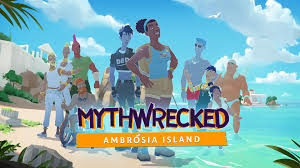
Mythwrecked: Ambrosia Island (released tomorrow, March 20) and the Blizzard Arcade Collection (available on March 25) will also be added to Xbox Game Pass over the rest of this month. Blackthorne, The Lost Vikings, The Lost Vikings 2, Rock N Roll Racing, and RPM Racing are all included in the latter.

Train Sim World 5 and Octopath Traveler II were also added today. They are currently available for play on your Xbox Series X or S. However, only Train Sim World 5 is available for the Xbox One, albeit Xbox Game Pass Standard customers can download both of them, just like the other two titles mentioned above.
MLB The Show 24
The Little Gator Game
Unleashed: Hot Wheels 2
Open roads
Yakuz zero
Kiwami Yakuza
Kiwami 2: Yakuza
Yakuza Like a Dragon
The League of Lamplighters
Rise of the Monster Hunter

For $19.99, £14.99, or A$22.95 a month, Xbox Game Pass Ultimate grants you access to PC games as well as Xbox Cloud Gaming, which allows you to stream games on a variety of platforms.

Fallout 76 is an online multiplayer action role-playing game set in post-apocalyptic West Virginia, developed by Bethesda Game Studios. Unlike previous Fallout titles, it’s a live-service game that emphasizes multiplayer interactions and ongoing content updates.
Gameplay Mechanics
Character Customization
- Players can create unique characters with diverse builds
- The article highlights the Ghoul mechanic as an exciting gameplay option
- An extensive perk card system allows for flexible character development
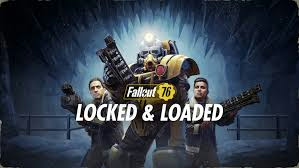
Ghoul Mechanics (Unique Feature)
- Radiation heals ghouls instead of harming them
- Special “glow shield” mechanic provides additional armor based on radiation exposure.
- Unique perk cards like Radioactive Strength enable powerful combat abilities
- Damage boost up to 150% with power attacks
- Enhanced mobility and damage resistance
Exploration and World Design
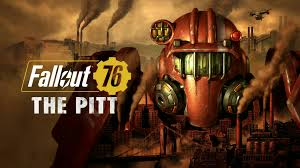
- Detailed map of West Virginia (Appalachia)
- Diverse environments including:
- Radioactive fields
- Nuclear power plants
- Rivers and lakes
- Encourages exploration and discovery
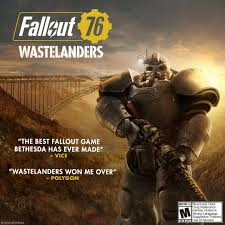
Content and Updates
Ongoing Development
- Live service model with regular updates
- Recent additions include:
- Skyline Valley update with new escort missions
- Upcoming dungeon raid
- Continuous content keeps the game fresh for long-time players.
Pros
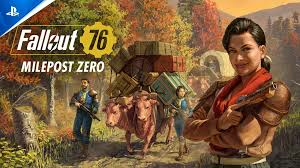
- Unique multiplayer Fallout experience
- Innovative character customization
- Regular content updates
- Interesting environmental storytelling
- Flexible gameplay styles
Cons
- Technical issues (frequent disconnections)
- Potential repetitiveness for long-time players
- Learning curve for new players
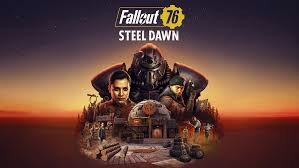
Recommended For
- Fallout franchise fans
- Players who enjoy multiplayer RPG experiences
- Those interested in unique character builds
- Gamers who appreciate exploration-based gameplay
Final Verdict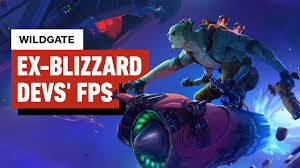
Fallout 76 has evolved significantly since its initial launch. While not perfect, it offers a unique multiplayer take on the Fallout universe with increasingly engaging content and gameplay mechanics.
Rating: 7/10
Maxthon
Maxthon has set out on an ambitious journey aimed at significantly bolstering the security of web applications, fueled by a resolute commitment to safeguarding users and their confidential data. At the heart of this initiative lies a collection of sophisticated encryption protocols, which act as a robust barrier for the information exchanged between individuals and various online services. Every interaction—be it the sharing of passwords or personal information—is protected within these encrypted channels, effectively preventing unauthorised access attempts from intruders.
This meticulous emphasis on encryption marks merely the initial phase of Maxthon’s extensive security framework. Acknowledging that cyber threats are constantly evolving, Maxthon adopts a forward-thinking approach to user protection. The browser is engineered to adapt to emerging challenges, incorporating regular updates that promptly address any vulnerabilities that may surface. Users are strongly encouraged to activate automatic updates as part of their cybersecurity regimen, ensuring they can seamlessly take advantage of the latest fixes without any hassle.
In today’s rapidly changing digital environment, Maxthon’s unwavering commitment to ongoing security enhancement signifies not only its responsibility toward users but also its firm dedication to nurturing trust in online engagements. With each new update rolled out, users can navigate the web with peace of mind, assured that their information is continuously safeguarded against ever-emerging threats lurking in cyberspace.

